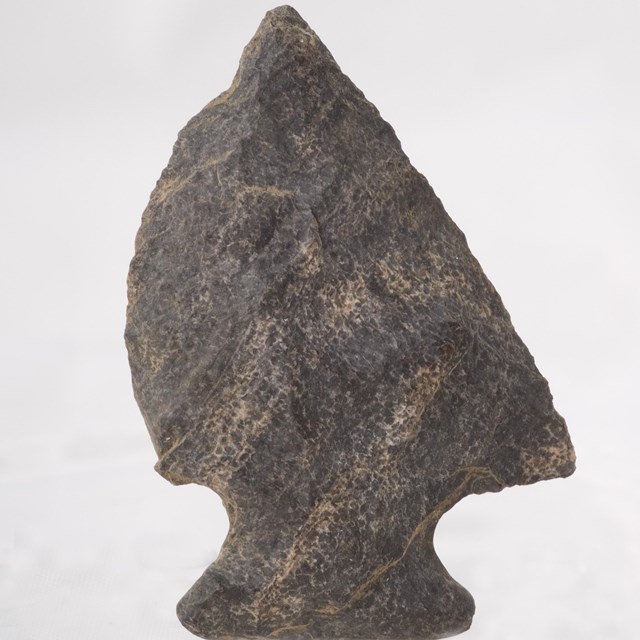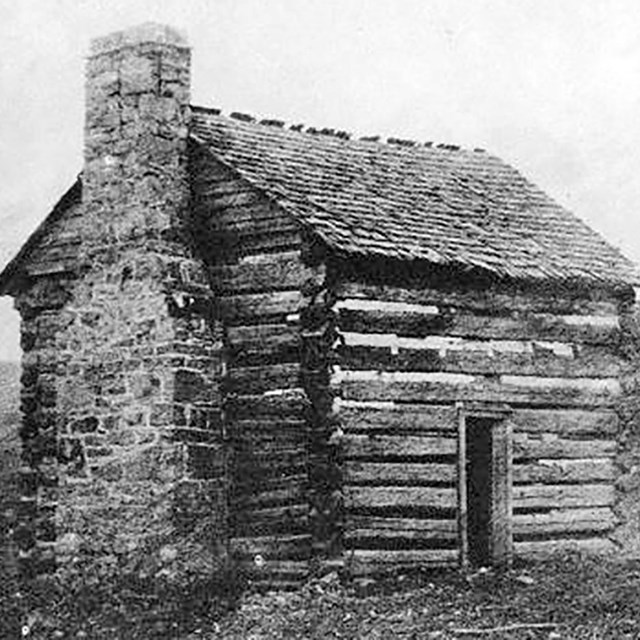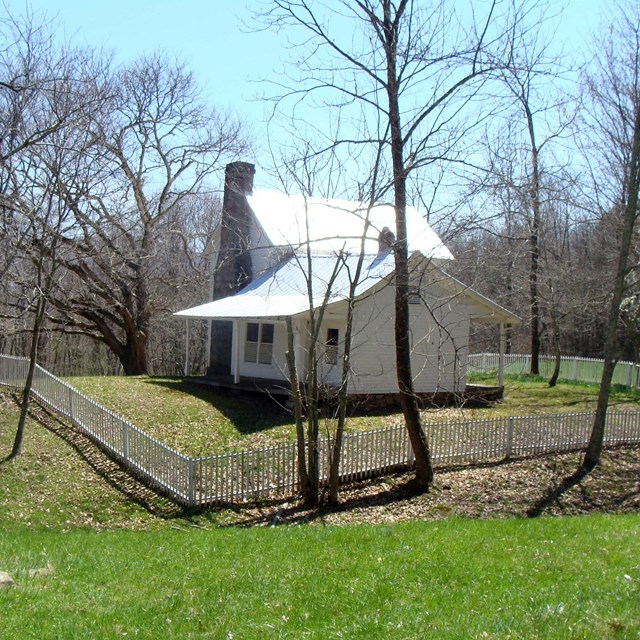|
Over 20,000 years ago migrants from northeast Asia came to North America. These peoples' descendants are modern Native Americans. The earliest groups crossed a land bridge between Siberia and Alaska during the last ice age. With so much water frozen in glaciers, ocean levels dropped exposing land. Some groups journeyed down the Pacific west coast to Central and South America. Others moved into the southern areas of North America. After the ice age, glaciers retreated revealing new land. The groups of southern North America moved into these areas as the ice retreated. Its possible that Native Americans lived in eastern North America 15,000 years ago. 
NPS / David N. Fuerst Over 10,000 Years AgoArchaeologists that study Native American history call these ancient people Paleoindians. They call the area where New River Gorge National Park and Preserve is located the lower New River region. The earliest Paleoindian artifact in the lower New River region is a spearpoint. It helps tell the story of the Clovis people and dates to between 13,050 and 12,750 years ago. The Clovis people lived in a tundra-like forest with long winters and short summers. A few hundred miles north in Ohio and Pennsylvania, glaciers had not yet melted. The Clovis people were big game hunters and gathers. They hunted mastodons, an elephant-like mammal, as well as types of bison and caribou . All these species are now extinct. Between 12,000 and 10,000 years ago, warmer conditions melted the ice sheets north of the Great Lakes. The ecosystem shifted to the deciduous forests we see today. Modern plant and animal species of the lower New River region entered the area. 10,000 - 3,000 Years Ago10,000 years ago marks the beginning of the Archaic period which lasted for 7,000 years. During this time, Native American populations in the Lower New River region grew. The people adapted to their changing environment and they began to thrive. New styles of notched and stemmed spearpoints appear in the archaeological record. Atlatls, a spear throwing stick, threw these new spearpoints forward at their targets. Instead of large game, these people hunted deer, bear, and small game. They fished for a variety of fish and shellfish in the river. Local forests had many different nuts, berries, and plants for them to gather. Around 6,000, people began cultivating gourd and squash. Later in the period people added other crops to their diet. These included sunflower, chenopodium, marshelder, maygrass and other domesticated seed crops. 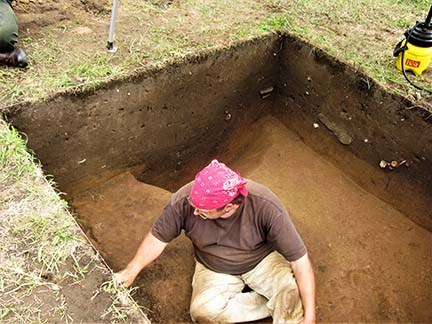
NPS / David N. Fuerst 3,000 - 900 Years AgoThe next period, the Woodland period, brought significant changes to eastern North America. It lasted from 3,000 years ago to about 900 to 1,000 years ago. Two primary groups lived in the area during this period. They were the Early Woodland Adena people and Middle Woodland Hopewellian people. The most notable change was the first creation and use of pottery for cooking and storage. People also began to trade using far-flung trade routes. Through these new trade networks, burial rituals also changed. The burial of higher status people in earthen or stone burial mounds began during this time. Through their trade routes, people obtained exotic grave goods from far away places. Burial mounds became common in the Kanawha and upper Ohio River valleys. Although less popular, people in the Lower New River region built some small mounds. Gathering and harvesting food continued the same as it had before. About 1,300 years ago, triangular and small notched points show that a new weapon replaced the spear. Bows and arrows were now the weapon of choice. 900 - 500 Years AgoBetween 900 and 500 years ago, big cultural changes happened in eastern North America. Communities formed along major waterways building permanent farming villages. Cultivation of corn, beans, squash, and domesticated seed crops in fields began. Hunters and warriors began to use triangular arrow points. An increase in sociopolitical structures led to increase in warfare. The Little Ice Age of 700 years ago most likely influenced some of these changes. The creation of large farming villages coincides with the Little Ice Age. Many of these villages had palisades, wooden spike walls, around them. Fort Ancient farmers migrated into the area from southern Ohio around 900 years ago. They settled on a large piece of bottomland along the New River. These people made a distinctive pottery called Bluestone phase pottery. This pottery was shell tempered with a plain surface and neck decorations. Tapering strap handles helped farmers carry the pottery and whatever was inside. In the park, excavation of a village from this period shows their diet was corn, deer, and nuts. 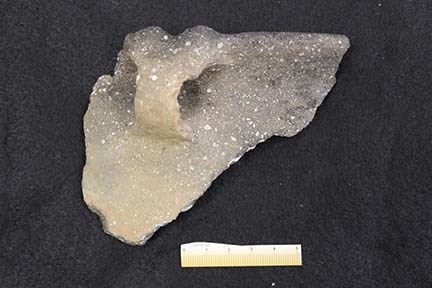
NPS / David N. Fuerst 1492 C.E. - 1650 C.E.After Europeans arrived in North America, a new period began lasting from 1492 C.E. until 1650 C.E. This was last period before the keeping of historical records about tribes in the region. Connecting these tribes to modern tribes, like the Shawnee, is difficult without records. Archaeological digs, however, show glass beads and other European trade goods in villages. This indicates that Native Americans were living in farming communities into the 1600s. Unfortunately, contact with traders and pioneers exposed many Native Americans to European diseases. These diseases decimated their populations and destroyed the social fabric of their societies. The people of the Lower New River region may have suffered this fate. The park is working to discover more of the untold history of the Native Americans in New River Gorge. Through archaeological excavations and modern descendants, we're discovering more pieces of their story. We hope someday to learn the full story of these people and share their history with the world. The following texts contain detailed archaeological information for those interested in reading more about the subject:
More New River Gorge History
|
Last updated: September 9, 2023

